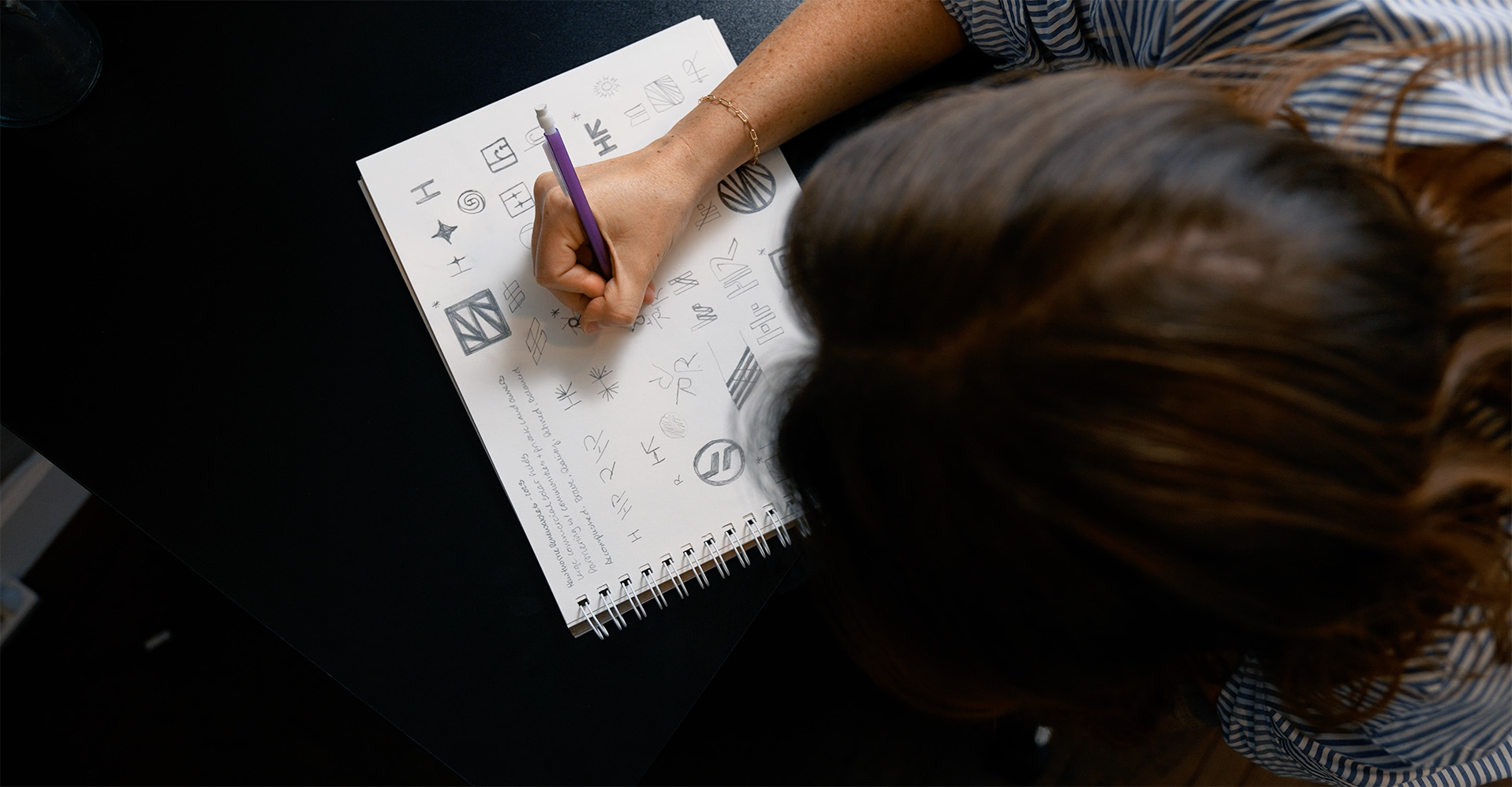As we start our businesses, it’s so crucial, from day 1, to invest in our own success by investing in our own brand. When our business is in startup mode, and finances are tight, it can be really hard to make certain decisions that could or could not greatly alter the standards of our brand long term. Defining and establishing not only what we do, but how we do it as well as how we don’t do it are incredibly useful in maintaining and managing a strong brand.
Our personal brand is what paints the picture of who we are and what we do. It’s an all-encompassing collection of features and characteristics, from how we look, to the way our websites look, to how we handle conflict and all the details in between. Our brand is a result of how we see ourselves, but ultimately, it’s what teaches others how to see us. Your brand affects the overall reputation of your business and even more so, your own professional career. It’s how we treat our own brand that teaches others how to treat us.
Visualize with me for a moment – Have you ever gone to someone’s house and it’s RIDICULOUSLY CLEAN! Like spotless – everything is in order and you feel like you’re in a hotel. Your overall reaction to your environment changes. From how you walk, to what you touch, to where you sit. Because of the way that person took care of their home, it dictated how you engaged with it.
Or if it’s totally the opposite, and your friend’s house is TRASHED, and I mean a total wreck, you’ll probably avoid that place like the plague or at least go out of your way to not have to spend great deals of time there.
These places even affect how we talk about them.
When you talk about Katie’s super swanky penthouse apartment, your whole tone and mood support how you feel about the environment. You’ll talk highly about it. Probably take pictures when you’re there and share it on Instagram, or jump at every opportunity to spend your time there.
V.S. Mary’s scary, dirty, messy cloud of death apartment. You’ll never want to be there, you’ll try to erase any trace of your existence there, and when you talk about it your tone and mood will support how you really feel about the place. (P.S. So sorry if your name is Mary. Not all Marys are messy, just this one in my story.)
We teach others how to treat our brand by how we treat our brand.
Same goes for our brand. When we show clarity and confidence in not just what we do buy why we do it, how we do it, and who we do it for then that provides the overall guidelines for how others will engage with us.
To use the classic cliche – “treat others the way you want to be treated,” treat your brand the way you want to be treated. You do this by setting standards for the overall experience you want to provide and not provide for your community. And guess what, by setting higher standards for your brand, you attract clients with higher standards for the brands they’ll work with.
Consistency Standards
I’m going to ask you a few questions, and I don’t want you to take your time when you answer. I want to know the FIRST brand that pops into your head. Then write them down on a piece of paper to reflect on in a moment:
- What’s your favorite soda?
- What’s your favorite restaurant?
- What’s your favorite coffee shop?
- What’s your favorite phone company?
- What’s your favorite computer?
- Who is your favorite entrepreneur?
Think about what it is that makes these brands stand out to you? What about them makes them first to your mind when you are asked a question about them. When Brands stand out, it’s because they stand for something. They have a clear brand message that resonates with you in some way that causes them to one that #1 place in your mind.
Branding is what people say about you when you are not in the room.
And when I say number one, I mean number one. It is more powerful than the first page of Google or the top trending focus of the day. This is a place that is eternally theirs until the do something personally that alters how you see them.
One a brand is the first in mind, all they have to do to stay there is to keep doing what they were doing when they got there. Stay consistent. Consistency is what breeds trust and trust is EVERYTHING in business.
As a brand, it’s hard to stand for something when you aren’t clear about what it is you really want. Take time and invest in researching what it is that you stand for. What is is that you want your brand to be known for? How do you want others to see you? Once you define what it is that you stand for, be consistent and live your message by sharing what it is you stand for.
Identity Standards
To continue on with the consistency focus, not only should our message be consistent, but how we share that message needs to be equally consistent. A huge way, especially online, to build consistency is to establish a clear visual identity. This is done through defining our brand throughout the visuals we use to promote our business; business cards, emails, pictures, social media, logos, and other visual marketing materials.
Invest in a style guide for your visual brand, and write down your visual identity rules. I remember reading an article the other day asking the readers to try and picture a Coca-Cola can in a purple plastic bottle with sans serif writing… It’s pretty hard, and when you do, it’s no longer Coca-Cola. Its some weird strange wanna-be coke in a water bottle. Suddenly, you don’t recognize your favorite soda. Once you can’t recognize something, your level of trust drops and it’s near impossible to get that trust back again.
You can invest in a professional designer to come in and help you write out and establish a clear visual branding identity style guide with all the rules and regulations on how, where, when your brand’s visual elements can and can’t be used.
All major companies have some form of this for their business, and I always say that “the biggest mistake a small business can make is to think like a small business”, so let’s think like the big boys here. Our brand’s identity is just as important if not more important to define as the big brands are. As small business owners, the stakes are higher. Every decision we make counts. Even as bloggers, when we guest post on other’s sites, make sure to let them know how and where your logo can be used. Where and how you want your images used, and provide them all the proper links and resources to properly promote your brand the way that you want to be perceived. Otherwise, confusion could occur when a reader tries to search you out later and if they can’t recognize you do to inconsistent branding, you might have just lost a potential customer.
I wrote a guest post for Design Your Own {Lovely} Blog, sharing a moment in my life where my Brand Style Guide saved my design.
Reputation Standards
As entrepreneurs and small business owners, we can’t afford to have a bad reputation. Unlike the bigger businesses that get away with a bad client experience now and again, people will expect more from us.
We need to be our own brand’s police.
When we have a bad experience at Walmart, we’ll always remember that bad experience but it probably won’t keep us from ever going back to Walmart again. V.S. a bad experience with a small business, boutique, or private restaurant… chances are after one bad experience there, we’ll never go back again and we’ll make sure to tell all our friends not to either.
Client Standards
Know who your target client is and set your standards for them. I have a million pins on this subject all over my Pinterest boards, and I know this isn’t the first time we’ve discussed understanding WHO it is we are serving. But it’s so important that I wanted to make sure I shared it again as we explored our brand investments.
Now, this doesn’t mean that if you are a brand designer who makes brands for women who have a passion for the color pink that you should never work with a man who also just happens to love pink. Set a standard for the kind of client you want to work with. Do they have a certain level of education, do they make ‘X’ amount of dollars, what are their biggest investments on a monthly basis, are they at a specific level of business? These are crucial questions to help you make the best decisions, for you and the client, when it comes to deciding who you will and won’t work with.
Running our business is a huge time investment and emotional investment. As entrepreneurs, we started this business to make a difference in the lives of the people we work with. It’s something that we love so passionately that we made it our career.
Making sure that the work we commit to and the clients we commit to are complementary to our brand’s goals. Always ask yourself, is this work that I will be proud of, the client will be proud of, and we’ll want to share it with others? Does it contribute to the forward progress of my brand and business? If the answer is yes, then it’s the right client. But if the answer is no, then maybe the greatest thing you can do for both you and the client is to invest in your right to say no.
Establish Brand Boundaries
Setup best practices and guidelines for how, when, and where you will and will not do business. Always make sure these rules complement and support your brand’s promise, as well as your personal life. Make sure that they are still serving within the best interests of your community.
These boundaries can be pretty much anything about how you run your business:
- What are your open business hours, and what are you closed hours?
- How can I contact you?
- What is expected of me, the client during our time together?
- How many revisions do I get during the design process?
- What is your cancellation policy?
- How far will you go to make sure that I am completely satisfied with our work together?
Then, we need to make sure we communicate these boundaries openly with our clients from day 1. This provides clarity in how we work and how others should expect to work with us, clarifying the brand experience we are creating for our clients. It creates transparency in our creative process and helps eliminate potential conflicts down the road.
Most of all (or at least to me this is the “most of all”) these boundaries establish our core values and professional morals as individuals, beyond our brand.
These boundaries establish our core values and professional morals as individuals, beyond our brand.
I, as your client, will respect you more when you say upfront that you don’t check emails or answer phone calls after 6:00 pm because that’s family time. It shows me that you value your family and being apart of their life is more important to you than my email. As your client, I want to be treated as well as you treat your family, and I’ll make sure I earn that right by respecting the rules you place to take care of what’s most important in your life. If I don’t then I might not be the best client for you, and you might not be the right hire for me.
These boundaries, standards, guidelines, and investments will protect your own sanity and create a manageable, maintainable, consistency to your brand and reputation that you will be known for. Invest in your own success by investing in your brand’s reputation and standards. Never settle for the bare minimum.







